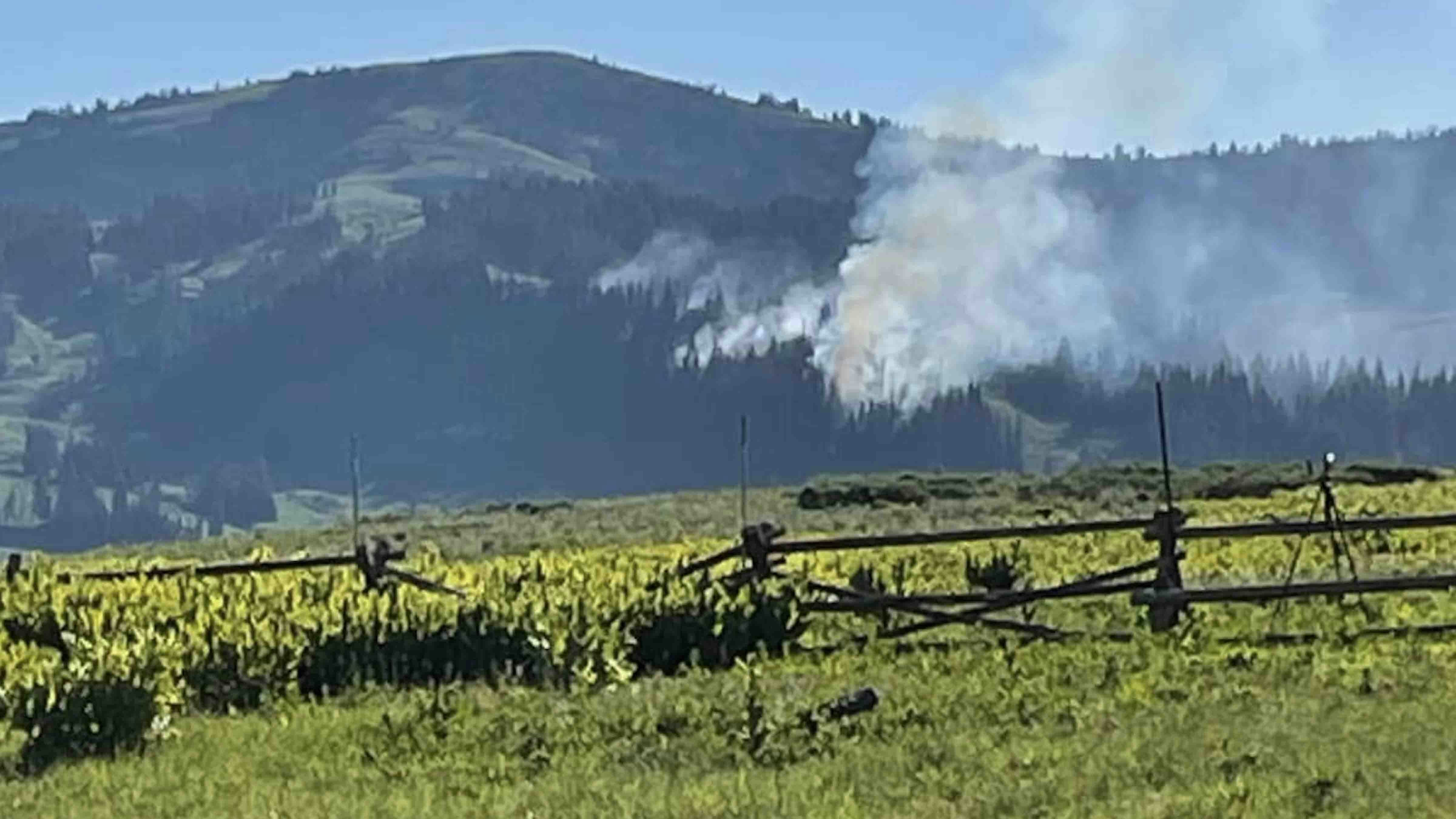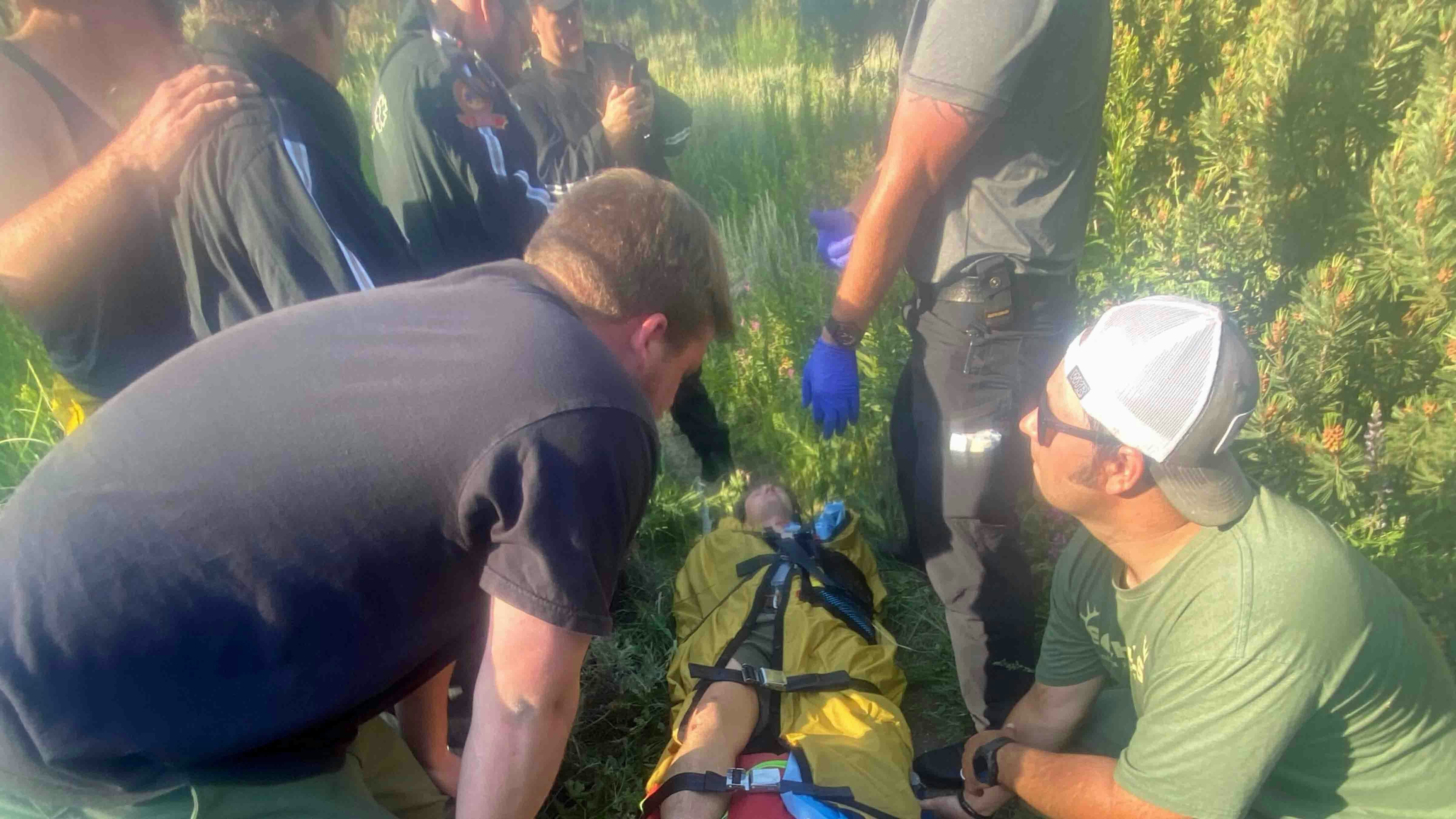Starting Monday, the federal government will start reducing one of Wyoming’s largest, most remote wild mustang herds by 90%, and horse advocates are incensed.
The North Lander complex includes four horse management areas sprawled across 375,000 acres of the so-called “sagebrush sea” in central Wyoming.
The Bureau of Land Management estimates 3,045 mustangs live there, but some observers of the herds say it could be 3,500 or more.
Over the month of July, the agency plans to round up all but about 320 of those mustangs.
‘All The B.S. About Wild Horses’
A contractor will use helicopters to drive horses into trapping corrals. Then they’ll be placed into temporary sorting pens. A few will be released back onto the range.
But most will be taken to the BLM’s long-term holding facility near Wheatland, where they’ll be put up for adoption.
“If we see that there’s about 320 horses out there, the gather is going to end. There will be no fewer than 320 horses left out there,” BLM spokesman Brad Purdy told Cowboy State Daily on Friday.
The BLM considers that to be an adequate number, as the area’s designated maximum carry capacity is about 500 mustangs.
Wild horse advocates, among them Riverton native Jim Brown, think that’s a ridiculously low number, hardly enough to ensure the mustang herd’s genetic health.
“I’m a Wyoming native born and raised, and what aggravates me the most is just all the B.S. that floats around out there about the wild horses,” he told Cowboy State Daily.

Mustang Underdogs
Brown lives in Casper, but was born and raised in Riverton. He’s been tracking and observing the North Lander complex mustangs since the early 1980s. He’s come to deeply admire them, even though they are sort of underdogs among mustangs.
“They’re not as well-known as the Pryor Mountain mustangs or the McCullough Peaks herd,” he said. “They’re one of the largest herds we’ve got, but they’re not well known and there hasn’t been much publicity about them.”
But as news about the BLM’s planned massive roundup spread, the North Lander herd is on horse advocates’ radar like never before, he said. There will be observers from advocacy groups keeping an eye on the roundups.
Many claim that using helicopters to drive mustangs is needlessly cruel, saying that the horses are run to exhaustion or panicked into hurting themselves.
Purdy said given the vastness of the territory involved, helicopter drives are the most effective method, and claims about them being cruel and dangerous are greatly exaggerated.
“People have tried to claim that helicopters hit horses. No helicopters hit horses. That is absolutely, 100% does not happen,” he said.
As Remote As It Gets
The North Lander complex is in the eastern part of the Red Desert. The best way to get there is through the Gas Hills area southeast of Riverton.
Remote roads take visitors through some of the most desolate country in Wyoming, coming out by Jeffrey City, Brown said
“When I was a kid, we’d ride out there to pick up stray horses for the old ranchers, or stray cows. Or we’d mend fences. It’s a really lonely area,” he said.
Genetically, the North Lander herd isn’t particularly special, he said.
According to local legend, way back when, there was a rancher who would breed some of his Morgan horses with the mustangs, and that Morgan blood remains in them to this day, Brown said.
When it comes to genetic purity, it doesn’t get any better than the Pryor Mountain mustangs, which have unbroken Spanish horse lines, Brown said.
“That’s why nobody will touch the Pryor Mountain herd,” he said. “The BLM has tried, but nobody will let them, because of those pure genetics. The North Lander herd is an easy target for the BLM.”
How Many Is Too Many?
Mustangs and wild burros were placed under federal protection by the Wild Horse and Burro Act of 1971.
Brown said the original intent was that cattle and sheep grazing would not be allowed on mustang HMAs. But the act was tweaked in 1975 to allow livestock grazing.
“Since 1975, it’s like that original law has disappeared,” Brown said. “It’s not like the horses are the main occupants of the HMAs. The HMAs are for grazing.”
That’s skewed the number of horses that supposedly ideal too low, he said. The BLM sets an appropriate management level (AML) for each area.
“The BLM’s D.C. office sets the AML for every area,” Brown said. “Their directive from Washington down to the field offices in Lander, Cody — wherever it is — is to get the horse numbers down to the lowest possible AML. And they’re not in compliance with ‘mother’ until they get down to that numbers.”
Purdy said the population numbers aren’t arbitrary. They’re set according to the carrying capacity of the land the horses inhabit, and in compliance with the 1971 law.
“The law is very clear. If we’re over AML, we gather horses,” Purdy said.
He added that the ideal carrying capacity for mustangs takes into consideration the health of not only the horses, but other wildlife species they share the range with.
Because the mustangs have no natural predators to speak of, their numbers grow quickly, he said.
Brown said claims of there being too many mustangs aren’t accurate. From what he’s seen. the horses, other wildlife and land in the North Lander area are all in excellent health.

Worth The Price?
“Rounding up and holding mustangs is expensive, and it’s paid for by tax dollars,” Brown said.
It can cost around $5 per horse per day to keep them in short-term holding, and about $3.50 per horse per day to keep them in the long-term facility, Brown said.
That can quickly add up to millions of dollars when simply letting the mustangs live their lives out on the range doesn’t cost taxpayers anything, he said.
“Maybe it’s because of my conservative Wyoming upbringing” that Brown said is why he doesn’t like seeing that much tax money going toward something that’s not necessary.
He also thinks the mustang herds are being slashed to appease large livestock corporations. Large outfits in Kansas and Nebraska can earn subsidies by keeping mustangs, he claimed.
“I’m not opposed to ranching. I come from a ranch background. I’m opposed to the wild horse roundups because I think it’s bogus,” he said.
Purdy said the BLM is focused on the long-term health of the land and the mustang herds, and doesn’t see mustangs and livestock grazing as being at odds.
“This isn’t about horses verses cattle,” he said. “That’s not fair to the horses or the cattle.”
Mark Heinz can be reached at mark@cowboystatedaily.com.





